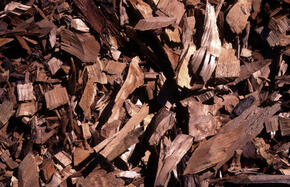What Kind of Animals Live in the Forest Floor
Working with Companies
To combat illegal logging and promote responsible forestry, WWF created the Global Forest & Trade Network (GFTN). GFTN links hundreds of companies, forest-dependent communities, non-governmental organizations and entrepreneurs in more than 30 countries around the world with the goal of creating a market for environmentally responsible forest products. GFTN works at national and regional levels to expand the area of forests under responsible and credibly certified forest management. It also works to encourage demand for "good wood" – wood and paper products from those well-managed forests. GFTN helps participants benefit from sustainable forest management and reduce demand for products from illegal and controversial sources. As a result of this program, habitat has been preserved for endangered species such as the Borneo pygmy elephant, orangutan and great apes.

WWF's Global Forest Trade Network (GFTN) works at national and regional levels to ensure the legal harvest of timber. Here, a man marks legally harvested timber.
Working to Reduce Deforestation
Eliminating all deforestation is not possible. Parts of the landscape will need to be reshaped and altered as populations grow and change—but this can be balanced through sustainable forest management, reforestation efforts, and maintaining the integrity of protected areas. Given the amount of deforestation around the world, zero net deforestation may seem unattainable. However, it is not only possible, but necessary if we intend to preserve our most precious wildlife, respect and empower local communities, maintain critical ecosystem services and reduce greenhouse gas emissions. Some nations are already finding success. Paraguay, for example, reduced the rate of deforestation in their country by 85% in the years just following enactment of its 2004 Zero Deforestation Law. WWF advocates for governments, international bodies and other stakeholders to make zero net deforestation a reality by 2020.
Offsetting Carbon Emissions from Forests
If carbon emissions from deforestation were taken into account, Brazil and Indonesia would rank in the top 10 of the world's worst polluters. WWF has a program focus on reducing emissions from deforestation and forest degradation in developing countries and the conservation, sustainable management of forests, and enhancement of forest carbon stocks (called REDD+). These efforts will also address many of the drivers of deforestation and provide incentives for nations to protect their forests while safeguarding the rights of local communities and indigenous peoples.
Creating Protected Areas
Securing forest ecosystems as parks and other protected areas can help to preserve their valuable plants and animals for future generations. Protected areas have proved key to the preservation of some species, such as the mountain gorillas that live in the forests of the Virunga Mountains in East Africa. In addition to protecting biodiversity, the Amazon Region Protected Areas program has demonstrated that a system of well-managed and sustainably-financed protected areas contributes to reduced CO2 emissions from deforestation. WWF has worked to create and continue support for protected areas in more than 100 countries around the world.
Promoting Sustainable Bioenergy

Biomass from forestry and farming has the potential to become a major source for sustainable power generation.
Humans have used forests for fuel for thousands of years, and 2.6 billion people today still use biomass—mainly wood and charcoal—for cooking. WWF works to promote bioenergy from scrap wood, oil and fats, sugar and starch crops, residues and wastes, and even algae to reduce reliance on forests and decrease greenhouse gas emissions. WWF's vision is that by 2050, 100% of the world's energy will come from sustainable, renewable sources, including bioenergy.
Stopping Illegal Logging
Illegal logging includes the harvesting, transporting, processing, buying or selling of timber in violation of national laws. WWF uses several approaches to tackle illegal logging. One is ensuring that powerful policies and trade agreements are in place in the US and other countries. WWF also provides guidance on best practices related to legality and responsible sourcing to hundreds of companies around the world, including in the US, and supports an alliance that monitors the status of the remaining natural forests in Sumatra's province of Riau. We, too, we encourage US consumers to buy wood products that are certified by the Forest Stewardship Council.
What Kind of Animals Live in the Forest Floor
Source: https://www.worldwildlife.org/habitats/forest-habitat

0 Response to "What Kind of Animals Live in the Forest Floor"
Post a Comment